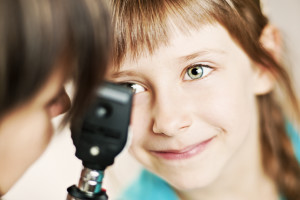VIEW FROM THE BCLA – January 2018
A New Year brings with it a new sense of vigour and enthusiasm. It gives us the chance to take stock and look ahead and provides an opportunity to set goals, plan and lay out our hopes, visions and expectations for the 12 months ahead. It also gives us the chance to make our New Year's resolutions.
What are your resolutions for 2018? Less chocolate? More exercise? Less wine? All very worthy I'm sure but it all seems to add up to much less fun. How about resolving to do something that really makes a difference this

year - why not promise yourself to mention contact lenses as an option to every single suitable patient - including children? That would really make 2018 a year to remember and would pave the way for fundamental change in the way the profession tackles the key issues affecting our patients day-in, day-out.
We’ve put together a shortlist of the three things we want to see happen in 2018. We will do all we can to ensure they become reality but we need your help. By working together we can deliver on these pledges and truly make a long-lasting difference to eye health.
1) Wage War on Myopia
If 2017 was the year of rallying the troops, 2018 is the time to really launch our offensive. We have the weapons, our army is in place, now let’s go on the attack. ‘Generation M’ ¬– as Ian Flitcroft described it at our recent Visionaries conference ¬– needs us to do more. There is no excuse, myopia management is available to all of us and it’s been proven to make a real difference.
2) Invest in young people
Our profession, thanks to the excellence of a number of universities, is fortunate to have a ready pipeline of exciting talent coming through the ranks. Bright young minds have a desire to succeed, an enthusiasm for technology and an appetite for effecting change. We need to encourage them and welcome them into our midst, equipping them with the tools and knowledge they need to prepare them for a lifetime in optics.
3) Get confident fitting kids
For years people have backed off from fitting children with contact lenses. That needs to change. Myopia in children is more prevalent than ever before and as a profession we have to be aware of what we can do to treat it effectively. We need to invest time in young patients. Why would you not want to spend an extra 10 minutes with a young child to help get them into contact lenses when they could become a patient at your practice for the next 70 years? Now that really would be short-sighted…
Happy New Year everyone!